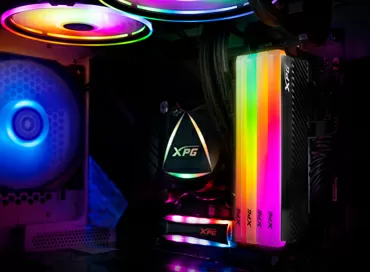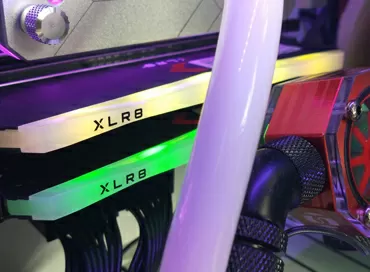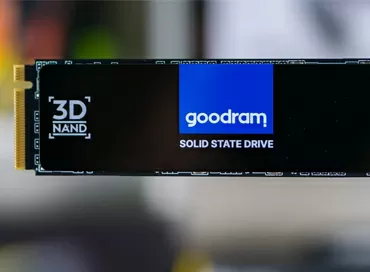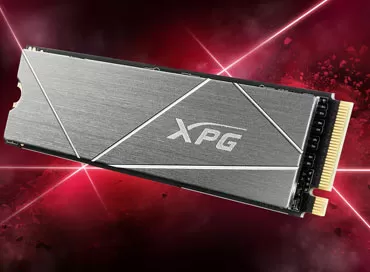Do you need fast DDR4-3600 memory in tasks for a workstation on the example of XPG Spectrix D50
A modern workstation is always an AMD processor, most likely a Threadripper or EPYC series, but in extreme cases - Ryzen 7, and as you know, these CPUs are very sensitive to RAM performance. Old-school PC builders may recommend that you use ECC workstations with memory supported by top-end "Pro" processors, but this purchase is not always justified. For a workstation, there are no such requirements as working in 24x7x365 mode with uptime "five nines": any modern software constantly saves a working project, and if an error occurs in memory, which happens once in several years, even in rendering operations, you can often continue from the place where the failure occurred. Therefore, if we talk about such an assembly option as" fast game memory to a workstation " or a server, then it makes sense to try to dive into the world of high radiators and RGB lighting.
One of the leaders in the production of gaming memory is AData, which promotes the XPG brand, under which SSDs, RAM modules and various accessories are produced.

Modern top-end motherboards support DDR4 memory with a frequency above 4666 MHz in overclocking mode, but this is not our case: the fact is that memory with an XMP profile configured for frequencies above 4 GHz is 2-3 times more expensive than mainstream modules with a frequency of 3.6-3.8 GHz, where it is completely free to choose stable high-performance sets of 2-4 dies on Samsung chips,such as the AData XPG Spectrix D50 DDR4-3600 set.
The Typhoon program provides the following information about the memory chips used:

XPG Spectrix D50 modules with a frequency of DDR4-3200 and 3600 have a latency of 18-20-20, an average indicator for such a frequency. There are also models with a frequency of 4133 MHz and latency CL 19-23-23, operating at a voltage of 1.4 V. After installation, two XMP modules are available in the BIOS of the board: at 3200 and 3600 MHz. The Taiphoon program provides the following information about the memory chips used.
When installing, it should be taken into account that the height of the memory module is an impressive 44 mm, and in our test stand there were difficulties with installing the second module, over which the CM Wraith Ripper cooler hung. In General, the gap between the radiator and motherboard selected, taking into account such high-modules, and if you first install the memory, and then CPU cooler, then difficulties will not arise, but if the cooler is already installed, the clearance for installation next to the socket slots is not enough: it is necessary to remove the cooler, memory set, and then install the cooler back.
Test stand
In general, before we continue, let's put aside the hypocrisy and ask the question: who said that a serious workstation should be a gloomy gray design? Today, with the mass transition to remote control, few people will want to put an ugly noisy box at home. A serious workplace may well be beautiful, inspiring the operator to creative feats, with RGB lighting, especially since all motherboards and cases for HEDT have all this in abundance. So, if we are talking about XPG Spectrix D50 memory modules, then this is a good example of a successful design: thick radiators with a thickness of 1.95 mm with a triangular insert for RGB illumination and ... software control of the RGB gamma using a special utility from under Windows.
|
Test Bench:
OS:
|
The main question that should be answered is whether the memory speed will affect the performance of tasks, and if so, to what extent. To answer it, we will use real-world application tasks that require large-scale calculations of all 32 cores.
Test - Cinebench R23
Perhaps the most famous test today shows performance in 3D model rendering tasks. In the 23rd version, the test is performed continuously for 10 minutes, and the average value is taken as the results.

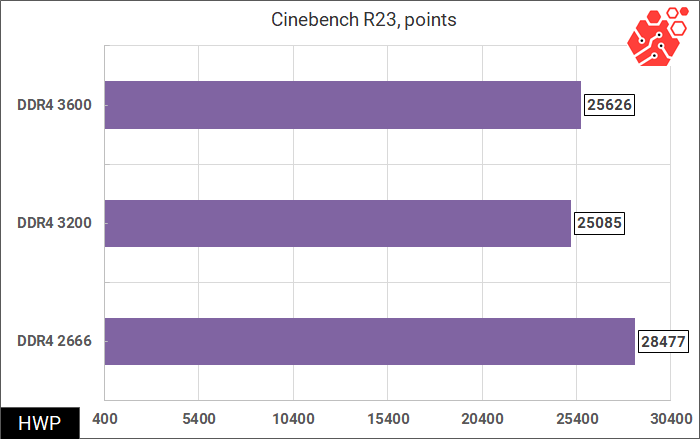
In the first test, we come across an abnormally high performance system with DDR4 2666. Despite the fact that the voltages, delays and other BIOS settings remained unchanged, this result makes you think.
Test-optimization of the parameters of the MetaTrader 5 trading robot
The MetaTrader 5 platform is known to every algo trader: it is a free package for stock trading with its own programming language for trading robots. The platform itself is free, and in the network you can find hundreds and thousands of paid and free robots that implement various trading algorithms. When setting up a robot for a tool, it is important to choose the right range of parameters, within which the robot trades in plus. There can be billions of such parameters, so the platform supports distributed computing over the network or over the Internet, as well as the accelerated optimization method "Genetic Algorithm". We will use a small sample of 2,000 parameters, using the hourly chart of the EURUSD pair for 2020 as a base, distributing it across 64 computing agents.
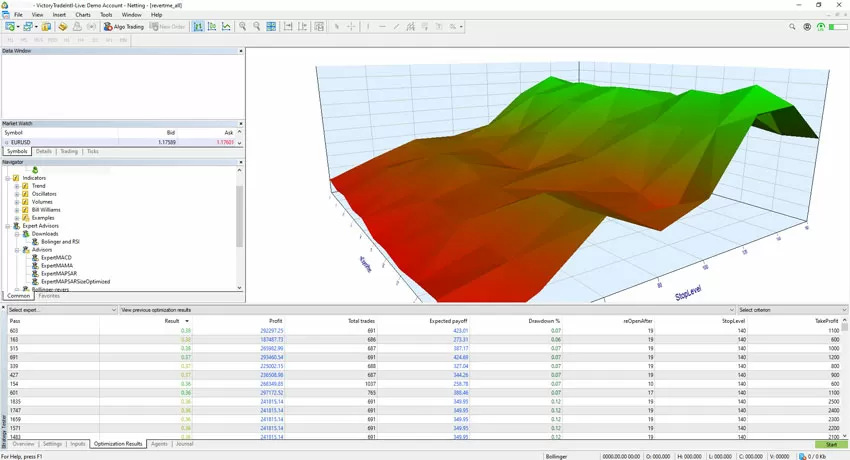
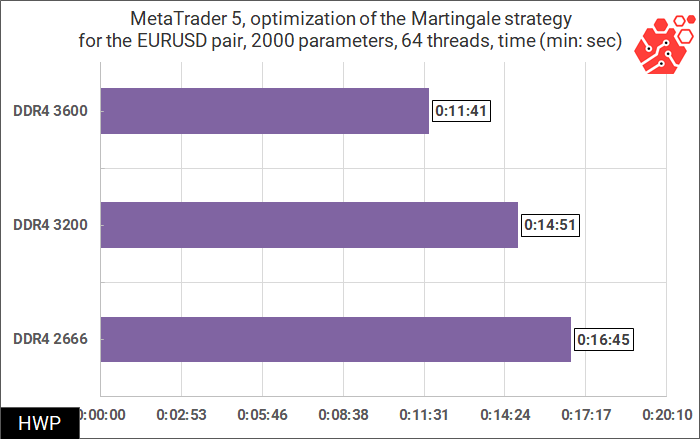
Well, actually, large-scale computing is where the fast memory of the XPG Spectrix D50 shows a significant gain in speed. Given that the recalculation of parameters can take several days, but all the data fits in 16 GB of RAM, this test clearly demonstrates that RAM modules in such machines need to be selected by frequency, and not by volume.
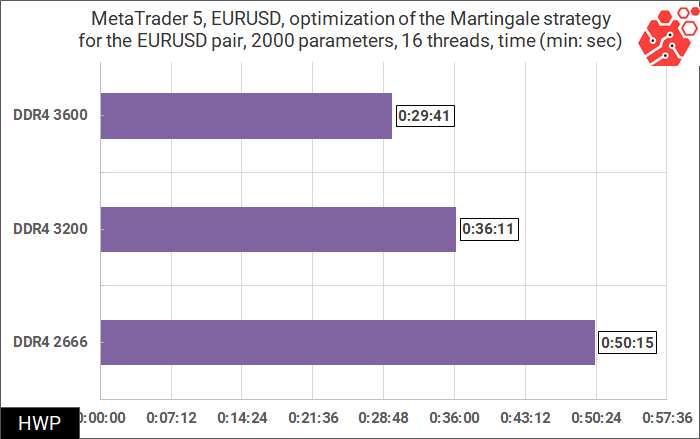
When the threads are reduced, the difference becomes almost 2-fold, since the RAM controller channels are used more efficiently, and any differences in RAM speed have a direct impact on performance.
Test rendering of the video in Davinci Resolve 17
A free package for non-linear video editing, Davinci Resolve 17 needs no introduction: This is an amazingly powerful and convenient platform, loved by thousands of video bloggers and used by Hollywood professionals. Our test is a 1080p video rendering for Youtube.
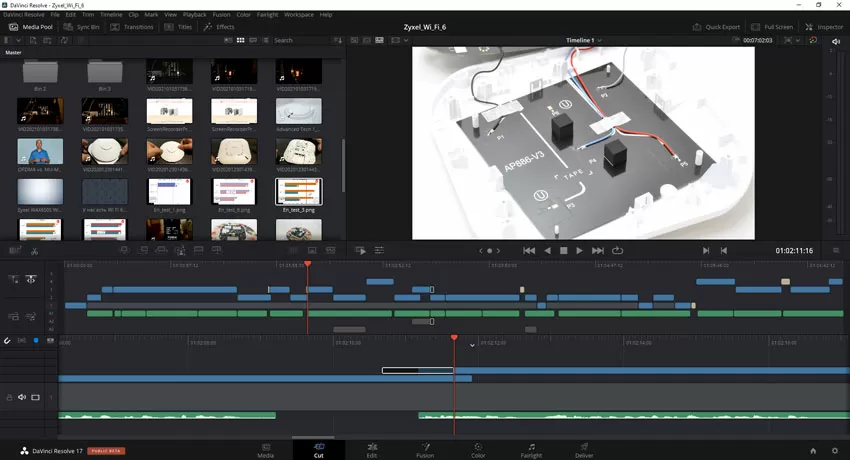
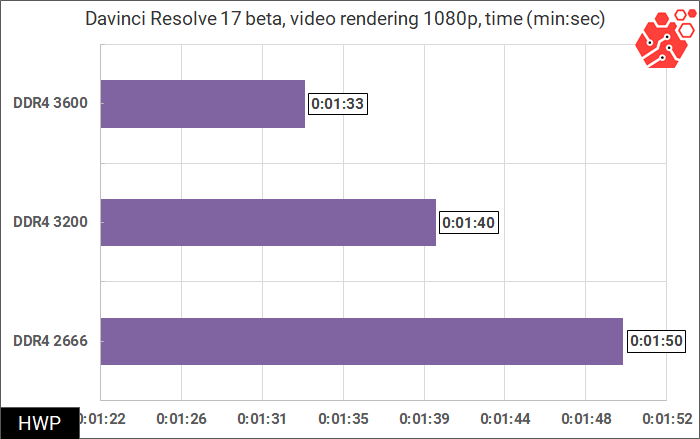
The source of our video contains both video footage and static frames, so the difference in rendering time is about 20%, which in general is also significant.
Recommendations when ordering
A modern workstation with 8 DIMM slots will allow you to install 64 or 128 GB of RAM, typed with 8 or 16 GB XPG Spectrix D50 modules. In most applications, this amount will be more than enough, and the excess will be cached for disk operations. When choosing a game memory set in a workstation, it should be remembered that for today's processors, memory frequencies above 3200 MHz are served as "easy, manufacturer-approved overclocking", so when using such memory, it is not superfluous to set loadline Calibration to "5" or "High" in the BIOS of the board - in our case, this was the key to stable operation on long loads.
But if your work uses long calculations related to mathematical models and Big Data, using fast game memory can give a strong boost to your workstation, seriously reducing the calculation time.
Michael Degtjarev (aka LIKE OFF)
14/01.2021









